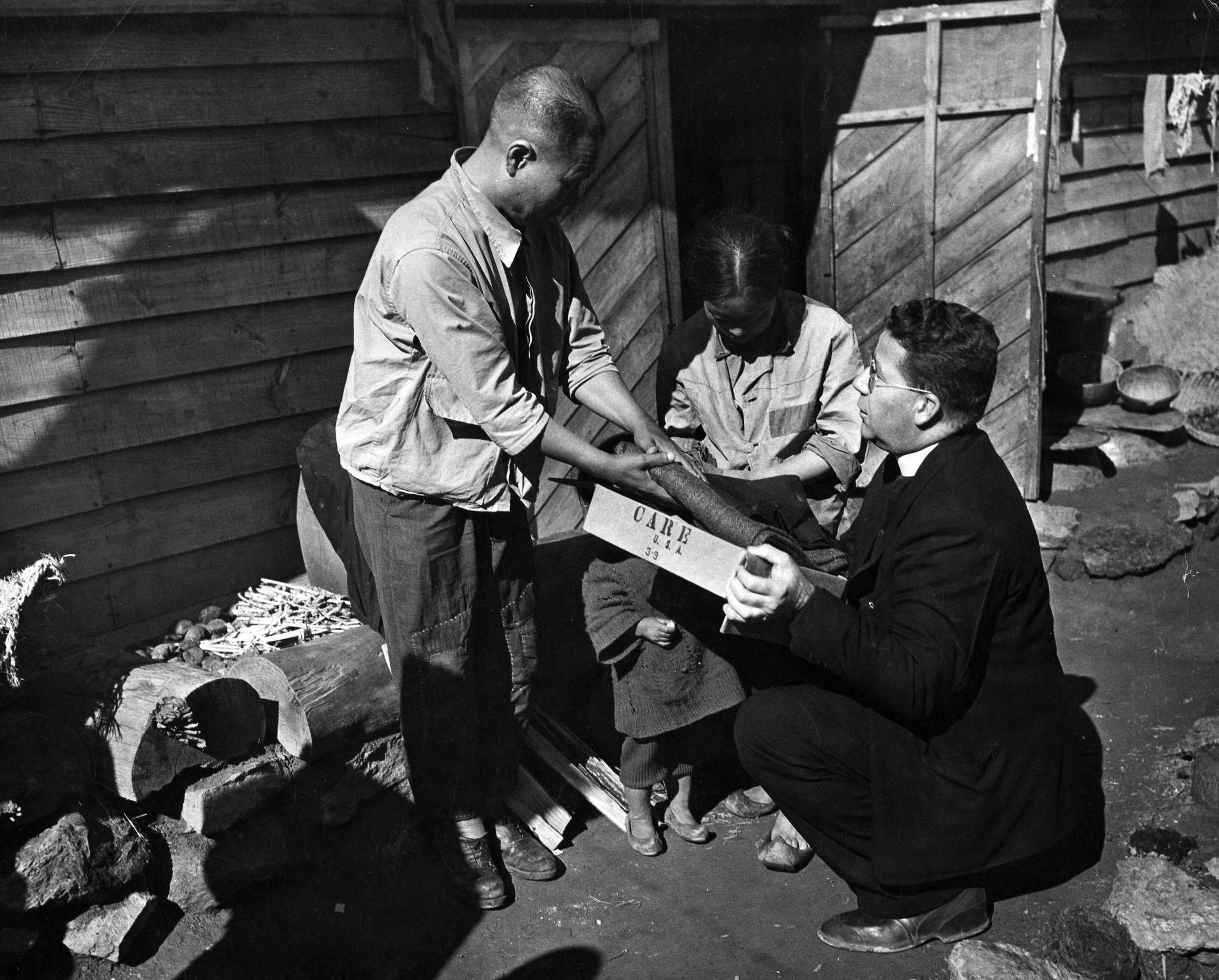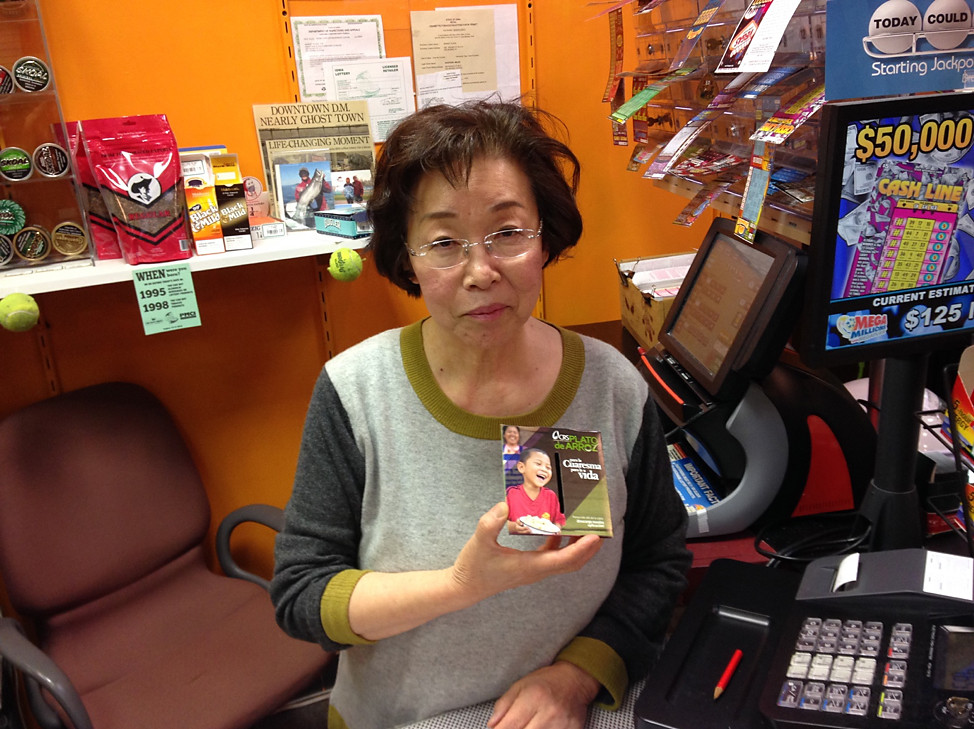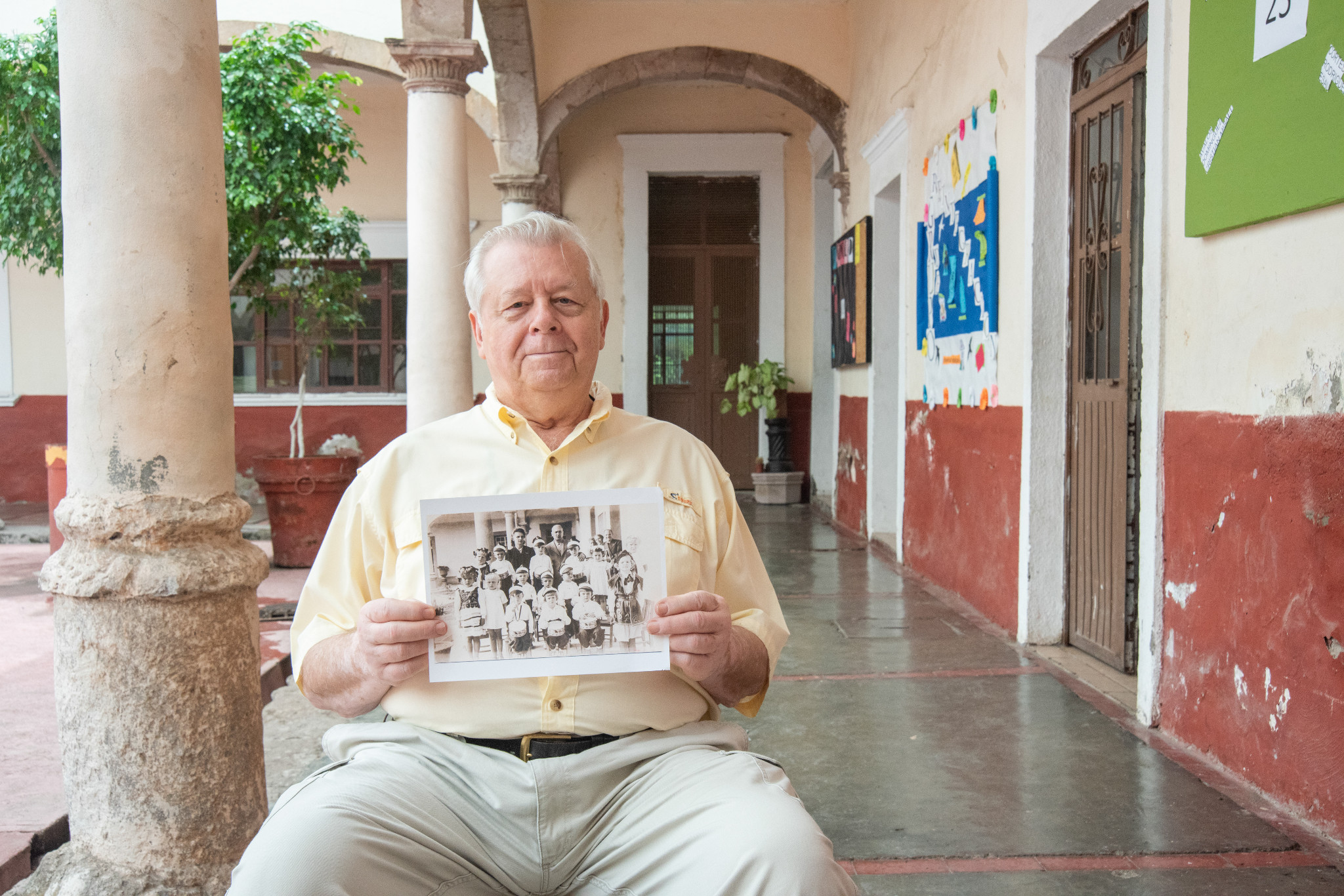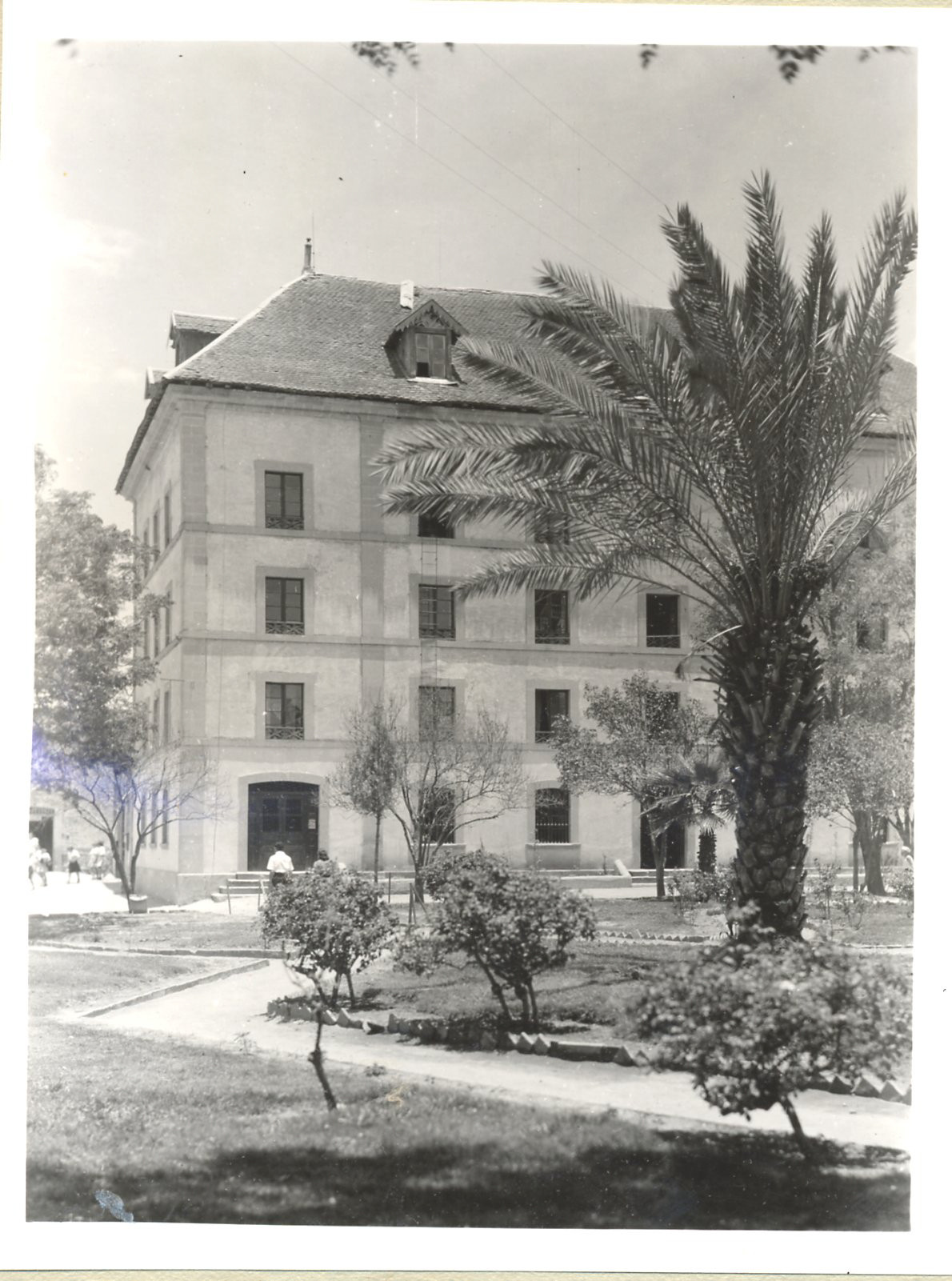Giving Thanks for the Unexpected
A few discarded pennies. A stack of business cards. Fliers for local events. These are the kinds of things you expect to see next to a convenience store cash register.
But Anastasia Walsh’s life is full of the unexpected.
She didn’t expect to have to flee her home in Seoul, South Korea, in December 1950 amid the Communist invasion. She didn’t expect to live in a cardboard box for 2 1/2 years. And she didn’t expect that a simple sack of rice would signal a lifelong commitment to an agency headquartered on the other side of the world.
That agency? Catholic Relief Services. And that’s why at Anastasia’s Des Moines-based convenience store, you’ll find a CRS Rice Bowl sitting next to the cash register. Unexpected indeed.
“Those people saved my life,” Anastasia remarks to anyone who drops a few coins into the small cardboard box.
It’s a story that still conjures up painful memories. Seven-year-old Anastasia, her 4-year-old sister and their parents walked for 31 days after fleeing Seoul—halfway across South Korea. It was cold, and at times they had to navigate chest-high, icy waters. Anastasia’s mother wrapped their feet in torn-up blankets to ward off the chill.
A bus carried them the rest of the way to Busan, a city in the far southeast region of the Korean Peninsula. There, they spent 2 1/2 years living out of a cardboard box.
“We were so hungry,” Anastasia recalls. “People here [in the U.S] go on hunger walks or fasts, but they know there will be food at the end of it. We never knew when we would be able to eat again.
“My mom would portion some food between my sister and me but save nothing for herself. We would ask her what she was going to eat, and she would say, ‘No, I’m not hungry.’” But Anastasia knew her mother was just as hungry as she was. “That’s a mother’s love,” she says.
That’s when CRS arrived, working through local partners—Maryknoll priests and sisters. Anastasia remembers Monsignor George Carroll, who directed CRS operations in Korea, bringing her mother a sack of rice. “It was heaven-sent—the best rice you ever imagined. With that one sack, we could live 2 or 3 months without worrying.”
In addition to the rice, Anastasia and her family received clothes and medicine—and education, through a refugee school on the side of a mountain. Though perhaps unconventional—the chalkboard hung from a tree—she was grateful to be able to attend school.
“If it weren’t for Catholic Relief Services and the missionaries, I wouldn’t be here,” she says. After the war, she returned to Seoul where she received a degree in mathematics and began working as an English-speaking secretary for the Peace Corps, eventually moving to the United States to continue her studies.
And now, every year, she places a CRS Rice Bowl next to her cash register, committed to helping other families like hers through the work of Catholic Relief Services.
Beginnings and Blessings
Two men, helped by CRS as children, share their stories of hope and transformation.
Santa Rosa: Revisited
Seventy-five years after he first arrived at Santa Rosa, Mexico, Julek Plowy remains thankful to so many. To Catholic Relief Services, which resettled 1,500 Polish refugees there during World War II. To the Mexican people, who welcomed a war-weary group of strangers. And to the Felician Sisters, who nursed them, taught them and rebuilt their faith in humanity.
Freed from a Siberian gulag in 1942, Julek, his mother and sister traveled first to Iran, and then to Mexico—part of the first project for Catholic Relief Services. They arrived after a harrowing journey by ship—exhausted, traumatized and unsure what to expect.
“We were welcomed with music and dancing, and an orchestra and flowers,” Julek says. “When we got there … wow. It was a miraculous arrival.”
Their new home was Santa Rosa, a former hacienda loaned by the Mexican government. Desperate for a place of their own, the refugees immediately got to work—patching the cracks and holes, tilling the soil to plant and even digging out the old swimming pool.
On hand to help was a group of Felician Sisters, volunteers from Chicago who traveled to Santa Rosa to serve as teachers, nurses, counselors and administrators for the refugees. They quickly became the core of social and academic life at Santa Rosa. Though he was too young to attend school, Julek recalls the stories his mother and sister told of the impact the sisters had.
“These nuns built back hope into us,” Julek says. “Faith and hope are really the most important things because they drive us as human beings. You can’t measure that. The only thing you can say is thanks.”
The Polish refugees spent nearly 4 years at Santa Rosa. In 1947, they resettled permanently to countries around the world. Julek and his family moved first to New Jersey, and then to New York. In the years that followed, they became United States citizens, settling ultimately in California, where Julek lives today.
In 2018, Julek returned to Santa Rosa as part of Catholic Relief Services’ 75th anniversary. Todaythe St. John Bosco Center for Young Workers, the site has changed since the 1940s, but many of the original structures remain.
“It’s an amazing feeling to relive this and all the memories that I have,” Julek says. “To relive the sounds of the Polish people here mixing with the Mexican people … it’s a once-in-a-lifetime experience.”
Walking the grounds, Julek reflected on the support that he and his family received from Catholic Relief Services, and the help the agency provides to other Central American migrants, seeking refuge in Mexico today.
“Well, I can’t express my gratitude properly to CRS,” Julek says. “The hope that they provide to those that are in such desperate need—it’s amazing.”
Learn more about Julek’s remarkable story, and his emotional return to Santa Rosa.










